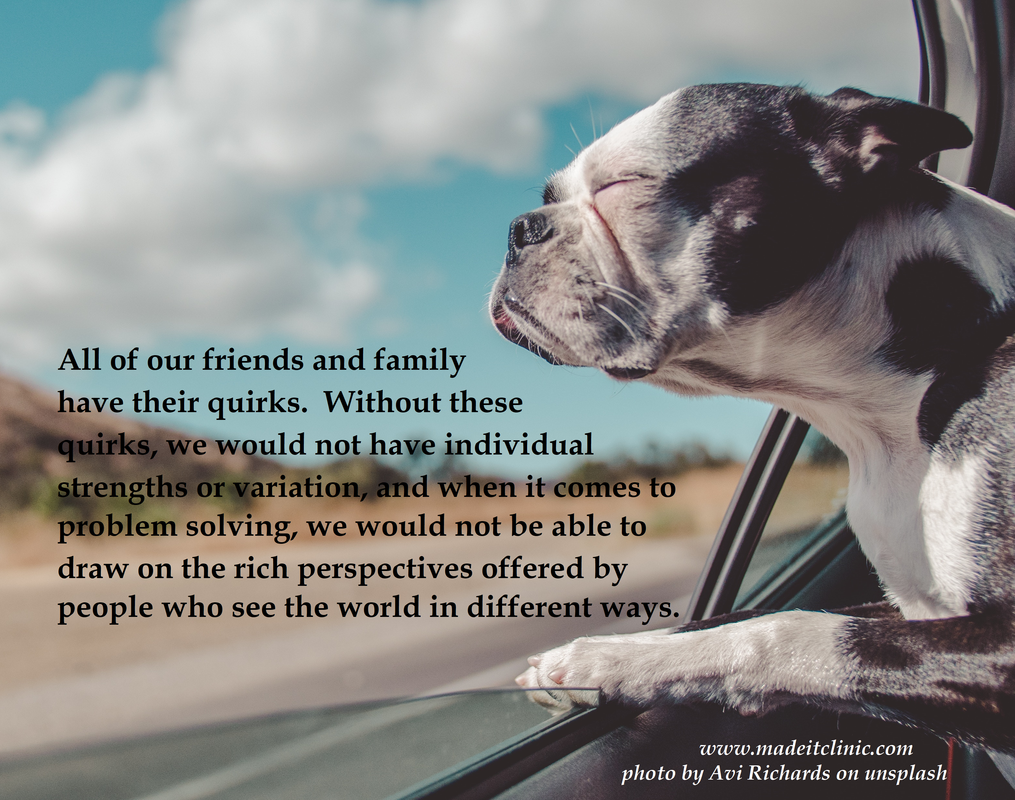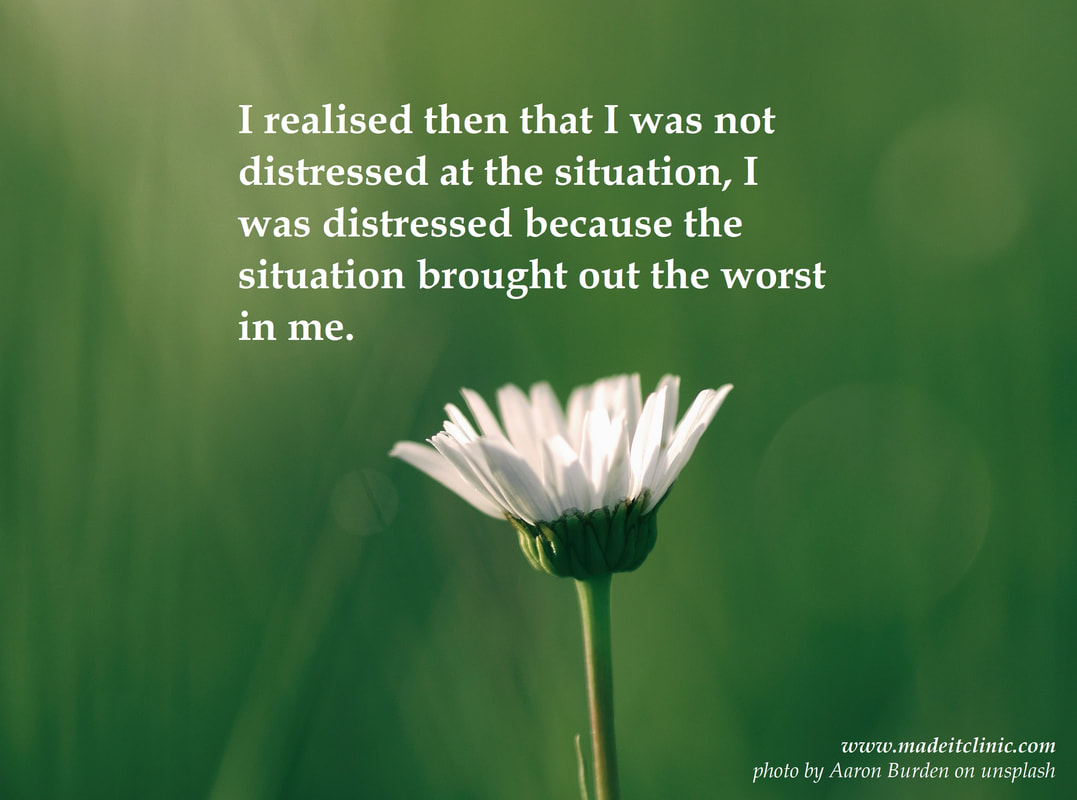|
Autism Spectrum Disorder is a label for a group of symptoms thought to be of a neurodevelopmental origin. The disorder arises from a combination of neurological (brain) differences, which could be in the anatomy, functioning, or connectivity of the brain. Given the complex interactions of environment and biology starting in utero (in the womb), these differences can arise for a number of combined reasons. Sometimes it’s because genes tell the brain to grow that way. Sometimes it is a result of brain injury. Sometimes it can be in the transmission of information (e.g. modelling of relationships) through early attachment. Whatever the cause, the workings of the brain are altered, producing altered sensory processing. This is expressed (seen) through differences in social interaction, strange sensitivities or tolerances, and inflexible or intense interests and rituals.
There is a bit of back and forth regarding whether autism is a ‘disorder’ or a ‘condition’. This has arisen from research and also the reported experiences of people living with the condition. The argument for autism as a classification as a disorder rests on the ideas that sensory processing in autism is impaired and impaired processing produces maladaptive (inappropriate) behavioural responses. Maladaptive behaviours require corrective intervention if an individual with autism is to remain functional in everyday society. Additionally, a secondary ‘disorder’ often seen in cases of autism is that while individuals with autism may be able to adapt functional behaviours, this requires the use of additional cognitive (brain) resources to compensate for the way that their brains naturally want to work. This means that they may experience increased fatigue and frustration, leading in the long term to low self-esteem, anxiety, and depression. In other words, if an individual with autism is smart enough, they can adapt to their environment (and sometimes do really well!), but this comes at a personal cost. This argument is not incompatible with the argument for autism as a condition. The difference in the view points between disorder and condition is that those who classify autism as a condition frame the sensory processing issues as a ‘difference’ rather than a ‘disorder’, and these differences are actually more common than we think. For example, if we dig enough, we’ll find that almost all of our friends and family have their quirks. Without these quirks, we would not have individual strengths or variation, and when it comes to problem solving, we would not be able to draw on the rich perspectives offered by people who see the world in different ways. It is a less stigmatising and more inclusive understanding of neurodevelopmental differences in the context of evolutionary biology. Researchers and advocates that take this stance want to build a more inclusive society that understands and encompasses differences, and where individuals with autism can best use their differences to their advantage. Intervention for Autism In either case, intervention in required at both individual and societal levels, involving the participation of family and sometimes friends. Left untreated, severe symptoms of autism leave an individual unable to participate in society, resulting in poor quality of life, poor health and education outcomes, and lower socio-economic status. A good rule when thinking about whether someone with autism requires intervention is to consider the functional impact of their condition. Is it stopping them from learning and developing skills required for social and occupational functioning? Is adapting to the demands of living causing a high level of distress? The first step to a good treatment plan for individuals with neurodevelopmental issues is to do a thorough assessment, including cognitive assessment. The rationale for this is that neurodevelopmental differences cause differences in functioning. Without a cognitive assessment, we don’t have an idea of what functions differ. Is it a limited working memory capacity? Is a high verbal comprehension masking poor auditory processing? Knowing the strengths and deficits in an individual’s cognitive domains gives us an idea of what they find challenging (‘what sets them off’). However, thorough assessment is rarely done before treatment, usually due to lack of funds or lack of understanding of importance of assessment. The second step is to decide on some targeted goals that are going to improve the quality of life and functioning of the individual. Clear and focused goals are important in measuring progress and effectiveness. They can also be used to determine what treatment may work best. For example, if the goal is to improve perspective taking, then a psychologist may be able to assist through a training program that enables the development of increasingly complex deictic relations (way of framing events in relation to self and others). If the goal is to improve the comfort of the individual by accommodation for their sensory differences, an occupational therapist may be able to assist with some sensory-based therapy and adjustments. In any case, improvements can then be systematically measured. If there is no improvement, or if improvement in a specific area does not result in improvement in overall functioning/quality of life, then the treatment plan can be adjusted. Sometimes, as intervention may span across multiple domains, or second opinions may be sought, it falls to the client or their families to keep track of the goals they are working on. The third step to a good treatment plan is regular review. A review of the treatment plan ever 3 – 6 sessions or so helps therapist and client keep on track with goals and effectiveness. If goals have been achieved, or if they are no longer relevant, a review can provide renewed and focused direction. Behavioural training, which has shown lots of promise in skills training and the treatment of maladaptive behaviours associated with autism, has a great evidence base, but alas is very boring. Progress can feel like a grind. Regular reviews can improve commitment to the process of longer interventions. Finally, a good treatment plan should involve skills development with a graduated return of responsibilities to an individual with autism and/or their families. The ultimate goal of self-management in the long term minimises reliance (and thus cost for clients!) on the therapists and builds self-esteem.
2 Comments
I’ve been at a loss recently in regards to my own behaviour when approaching a painting project in my complex. Correspondence on this issue has taken up much of my down time, and I’ve had this churning, dreaded feeling in my stomach every time I open my personal emails.
While I should know better because of my profession, I am just realising yet again that aspects of a situation can draw out undesirable characteristics in anybody. If an environment is tense and antagonistic, I find myself drawn to respond in kind. Shooting back a terse email is automatic and requires little effort at all when I am angry. When my brother-in-law visited yesterday, he commented that my approach to life’s challenges seemed very relaxed and open. His words made me think about the life I like to lead and the approach I like to take when solving problems. This led to the realization that I had not been acting this way in terms of the painting project, and it was actually my response in the situation that had led to my despair. While it is difficult to read disagreeable emails, I realised that my prolonged distress had more to do with my unhappiness in my own behaviour. Somehow, my behaviour had become so incongruent with my values that I hardly recognised myself in these emails. The distress at having to respond to these emails did not come from the problems being insurmountable (I am of the fatally optimistic mindset that no problem is insurmountable), it was because the emails brought out the worst in me. Now that I know this, I am trying to keep my values in mind when responding to the emails. I want to be open, collaborative, and solution focused. Today when I responded to the string of emails with my values in mind, I found that I could breathe a little easier and my stomach didn’t churn as much. Nothing in the situation has changed, but I am better able to endorse my current behaviour, which makes it easier to sit in my own skin. Of course, the flip side of this is that some situations in life really are toxic and we might do well to remove ourselves from the situation when we can. I am certainly not going to participate in projects of this sort again in the near future. Life’s too short! |
Archives
April 2021
CategoriesSocial Media |



 RSS Feed
RSS Feed